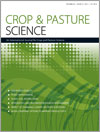CP11175 Statistical aspects of on-farm experimentation
Agricultural field experiments are increasingly being performed on farms instead of on research stations, especially in the context of precision farming. Such experiments pose a number of new challenges regarding experimental design and efficient statistical analysis. This paper reviews recent developments in this area and considers how classical statistical principles can be employed to make effective use of these innovative experimental approaches.




